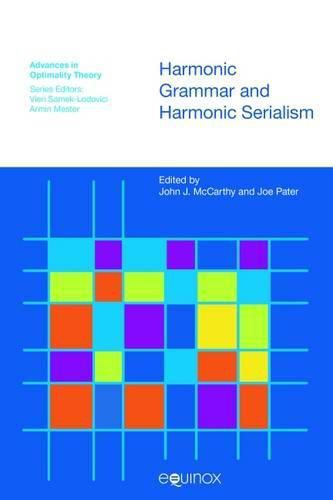Readings Newsletter
Become a Readings Member to make your shopping experience even easier.
Sign in or sign up for free!
You’re not far away from qualifying for FREE standard shipping within Australia
You’ve qualified for FREE standard shipping within Australia
The cart is loading…






Harmonic Grammar and Harmonic Serialism introduces readers to current research in Optimality Theory that involves a reconsideration of two of Prince and Smolensky’s (1993/2004) basic architectural decisions. One is the choice of constraint ranking over the numerically weighted constraints of OT’s predecessor, Harmonic Grammar. The other is the choice of parallel evaluation over a version of OT in which the representation is changed and evaluated iteratively Harmonic Serialism. The contributions in this volume explore the consequences for phonological theory of adopting serial evaluation, weighted constraints, or both. Because the volume contains both introductory material and the latest research, the intended audience encompasses advanced undergraduates, graduate students and professionals in the field. Although the content is mainly phonological, the book will also be of use to researchers in OT syntax and computational linguistics.
$9.00 standard shipping within Australia
FREE standard shipping within Australia for orders over $100.00
Express & International shipping calculated at checkout
Harmonic Grammar and Harmonic Serialism introduces readers to current research in Optimality Theory that involves a reconsideration of two of Prince and Smolensky’s (1993/2004) basic architectural decisions. One is the choice of constraint ranking over the numerically weighted constraints of OT’s predecessor, Harmonic Grammar. The other is the choice of parallel evaluation over a version of OT in which the representation is changed and evaluated iteratively Harmonic Serialism. The contributions in this volume explore the consequences for phonological theory of adopting serial evaluation, weighted constraints, or both. Because the volume contains both introductory material and the latest research, the intended audience encompasses advanced undergraduates, graduate students and professionals in the field. Although the content is mainly phonological, the book will also be of use to researchers in OT syntax and computational linguistics.